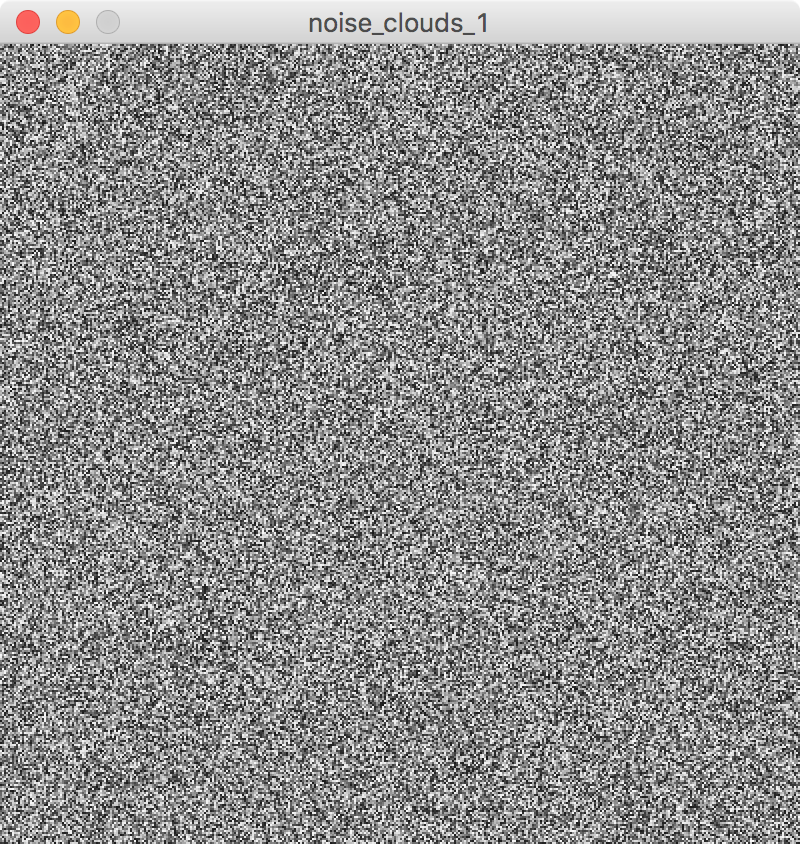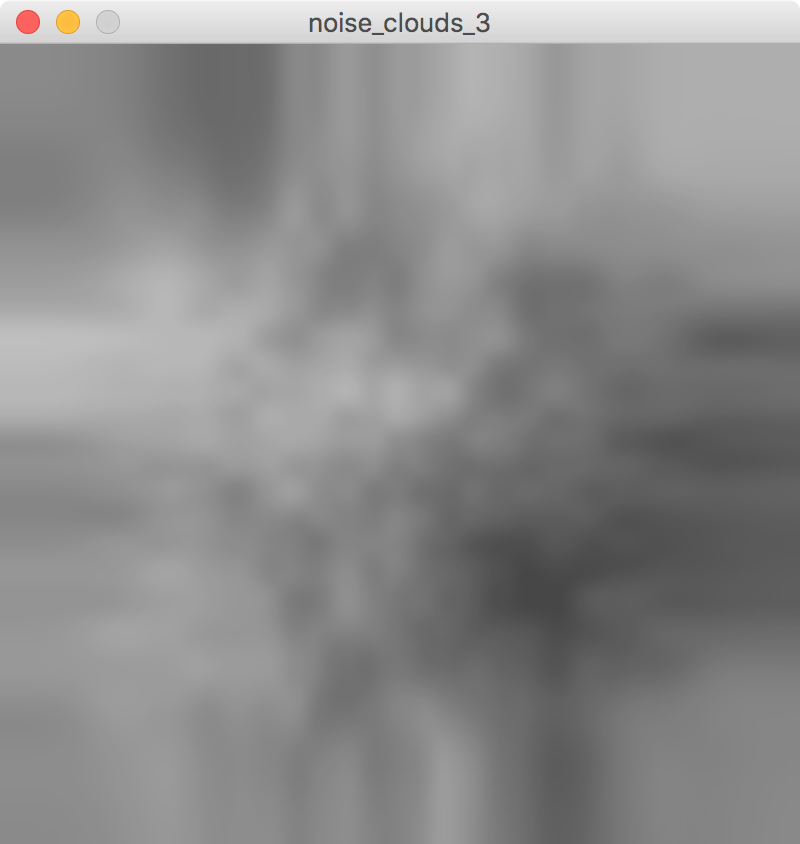Better Randomness
I’ve used a lot of random seed in my experiments so far, but pure randomness can feel quite artificial and flat. The first chapter of Daniel Shiffmann’s The Nature of Code, dives straight into this, with discussions of normal distribution and other types of randomness. In these sketches I’m playing with Perlin noise.
Simple noise fields
This code generates a screen of random brightness dots:
void setup() {
size(400, 400);
}
void draw() {
noLoop();
for(int y = 0; y < height; y++) {
for(int x = 0; x < width; x++) {
stroke(random(0,255));
point(x,y);
}
}
}

This code generates a screen of dots whose brightness is selected from a 2D field of Perlin noise.
float startingOffset = 100;
float noiseIncrement = 0.006;
float noiseOffsetX = startingOffset;
float noiseOffsetY = startingOffset;
void setup() {
size(400, 400);
}
void draw() {
noLoop();
for(int x = 0; x < width; x++) { // draw the columns
noiseOffsetY = startingOffset; // reset y offset every column
for(int y = 0; y < height; y++) { // draw the rows
stroke(map(noise(noiseOffsetX,noiseOffsetY),0,1,0,255));
point(x,y);
noiseOffsetY = noiseOffsetY + noiseIncrement; // increment the noise offset
}
noiseOffsetX = noiseOffsetX + noiseIncrement; // increment the noise offset
}
}

Couple of interesting things here:
- As far as I can tell, the noise is deterministic. i.e. a particular point in the Perlin cloud will always have the same value.
- Smooth changes in value (ie soft clouds) come from small increments along the Perlin axis. If you change the value of
noiseIncrementto be something much higher, e.g.1, then you get a much more coarsely textured noise. You can also see the repeating pattern at this scale, which gives some credence to the idea that it is deterministic. - However, each time you run the sketch, you get different clouds, so there must be some non-deterministic element…

I’d like to introduce some variation to the noise, perhaps, making the clouds denser in the middle of the screen and smoother towards the edges. I tried adding a function to create a sine wave-shaped variation:
// 2D
float generateSeed(float x,float y) {
return (sin(map(x, 0, width, 0, PI)) +
sin(map(y, 0, height, 0, PI)))
/ 2;
}
//1D
float generateSeed(float x) {
return sin(map(x, 0, width, 0, PI));
}
}
On a simple brightness field, this yields a soft bulge in the centre of the screen:

But applied here, I get a cross-like shape, which isn’t what I’d hoped for:

In both cases, the field of colour is created by looping through a series of rows and columns of pixels, but I wonder if the cross-shape here relates to the use of the offset to create the variation in cloud density?